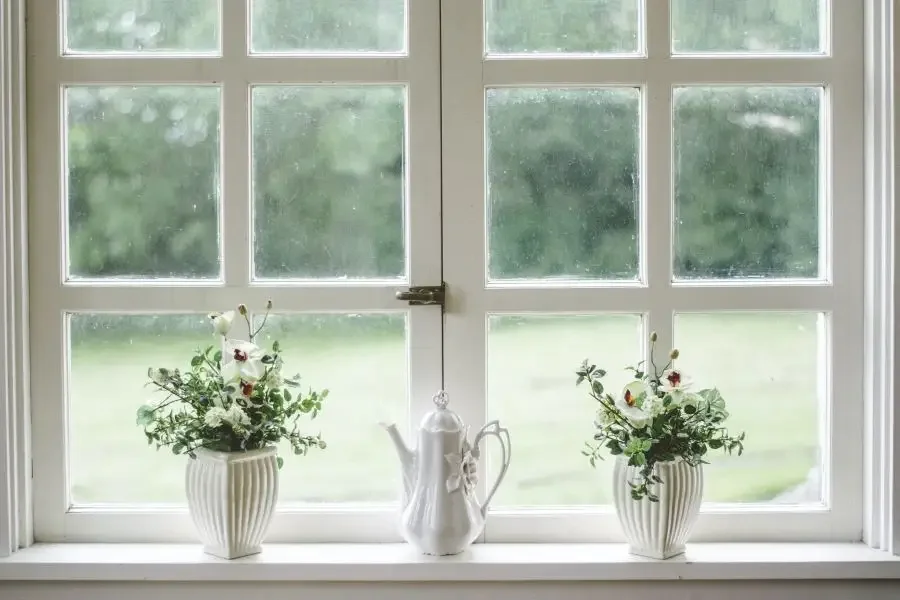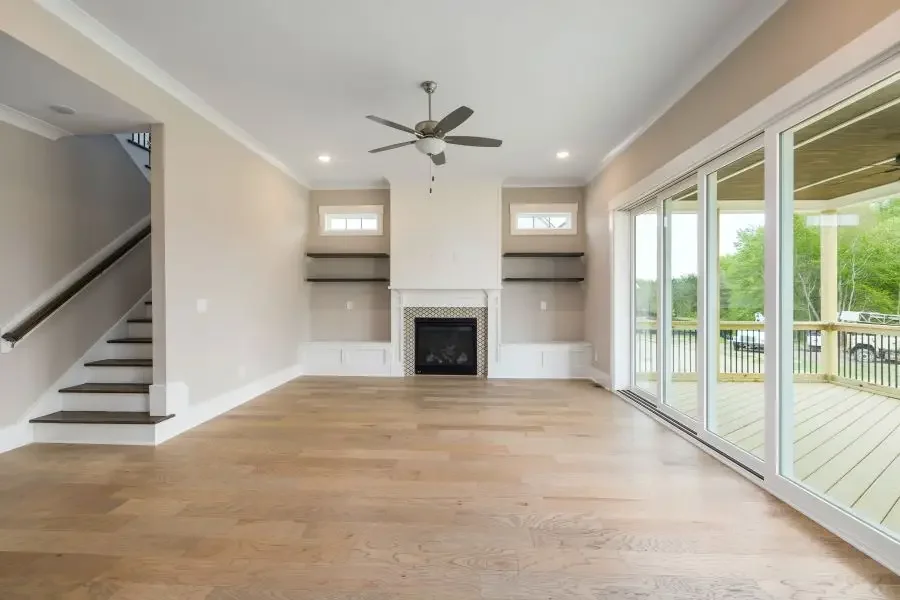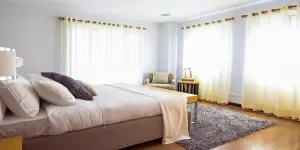Windows brighten up a house, and provide natural ventilation. This light and fresh air boosts a home’s indoor air quality and the homeowners’ well-being.
With many kinds of windows on the market, casement and sliding windows stand out as two of the most popular. However, one may find it challenging to choose which of these is ideal.
This guide will offer a rundown of both casement and sliding windows, so that potential buyers can choose the type that best fits their home.
Table of Contents
What are casement and sliding windows?
Casement vs. sliding windows: Which is right for you?
How to choose between casement and sliding windows
Final thoughts
What are casement and sliding windows
What is a casement window?
A casement window is one of the earliest forms of windows, comprising glass attached to metal or wooden frames.

Casement windows are vertical and have hinges or pivots on the upright side of the hung sash. These windows open outward or inward like doors and have simple locking handles. Casement windows are called ‘crank windows’ since the handles have to be cranked to extend the window’s arm to open outward.
Although casement windows have been around for ages, contemporary designs are available. Plus, their practicability and versatility make them a favorite among buyers. Casement windows are made of different materials, including vinyl, fiberglass, wood, and aluminum. Commercial residential windows are a good casement window to stock. They are suitable for all rooms and have a minimum order of one square meter.
What is a sliding window?
A sliding (or slider) window is modern, with sashes gliding horizontally (to the left or right) along a wooden frame.

Sliding windows comprise minimal hardware, as there’s no frame to split the glass panel at the center. They are common in spaces where the width is greater than the length. A customer would go for these window types to brighten up the rooms or achieve a preferred view.
Sliding windows also come in different configurations and sizes, depending on the customer’s style preferences and budget. A good sliding window option is north tech sliding doors and windows. One can order a minimum of one square meter with a lead time of 30 days for one to ten square meters.
When should you use sliding and casement windows?
Sliding or casement windows can be installed in a room to provide natural light and ventilation. However, it’s best to use sliding windows to optimize space and attain a desired view of the outdoors.
On the other hand, casement windows are the best to install when maximum light and ventilation are the top priorities. Moreover, these window types are ideal for large and narrow spaces.
Casement vs. sliding windows: Which is right for you?
Identifying the best window type for a specific room or space can be daunting. And with the varying features of casement and sliding windows, customers need guided advice to make informed decisions.
Casement windows are the most appropriate forms to install in spaces requiring maximum ventilation and lighting. Hence, it’s ideal to have them in living rooms and bedrooms. They are also suitable for regions with strong winds since the crank handles seal the windows tight when the wind blows.
In addition, a customer can choose casement windows to achieve a minimal but refined look.
On the other hand, sliding windows are ideal for small homes, as they fit in small openings. Moreover, since there’s no frame separating the glass panel, sliding windows amplify a space, making it appear bigger. Plus, they provide a picturesque view of the outdoors, making them best-fitted for areas with beautiful natural scenery.
Types of sliding windows and casement windows
Different types or configurations of sliding and casement windows are available. Therefore, this gives the buyer a chance to choose a type that matches their preferred look, room or space size, budget, and other considerations.
Types of sliding windows include:
- Single-slider windows: These sliding windows have a single fixed (or enclosed) frame. And they comprise one movable sash that glides horizontally over a stationary one. So, single-slider windows have a classic, minimalist look.
- Double slider windows: These sliding windows comprise two movable glass panels that glide to the left and right. Therefore, they leave a large glass area that provides an unobstructed view. These windows also offer maximum ventilation and allow airflow control by closing one of the glass panels.
- Three-pane slider windows usually contain three glass panels in a larger frame or picture window. The outside panels are movable and glide to the left or right, enabling optimum airflow. As a result, these sliding windows are common in offices and large rooms to improve indoor air quality.
Types of casement windows include:
- Single-frame casement windows: These windows have a single frame with wooden strips separating the window panes. They are popular among homeowners due to their low cost and durability.
- French (double-frame) casement windows: These casement windows have two frames hinged on either side. They open to the left and right and assemble in the middle. They also provide better airflow than single-frame casement windows but are more expensive. In addition, they offer the best escape solution in case of accidents or emergencies.
- Push-out casement windows open by being pushed out by hand rather than by cranking them. Also, they have a single frame hinged on the side.

Differences between casement and sliding windows
Casement and sliding windows differ in various ways, including the following:
- Casement windows are usually installed in tall and narrower openings. On the other hand, sliding windows are best for more expansive spaces.
- According to the US Energy Department, sliding windows are less energy efficient than casement windows since they have a more flexible seal. It can be broken easily, allowing air leakage.
- Casement windows offer better ventilation since they open completely while sliding windows usually open halfway.
- Casement windows open outward or inward, while sliding windows open by gliding horizontally.
What to consider when buying windows
Choosing the right window type is a top priority for buyers, especially those who want to minimize costs and energy use. Whether buying new windows or replacing old ones, a customer has to consider several factors.
These include:
- Cost/budget – Some window types are more expensive than others. For instance, double-frame casement windows cost more than single-slider windows. Hence, a budget provides a guideline on how much to spend on a particular window type.
- Light needed – Sliding windows are best suited for spaces that need more lighting, like living spaces and offices. In contrast, casement windows are ideal for tall, narrow spaces, which don’t need a lot of light.
- Energy efficiency – Energy-conscious buyers would want window types with tight seals, as they provide higher energy efficiency.
- Window material – Many window materials are available nowadays. Some materials, like vinyl, are inexpensive and practical but may need to be more durable. On the other hand, composite and fiberglass are more expensive but eco-friendly and energy efficient.
- Security – Some window types provide maximum protection since they have lower break-in possibilities.
- Durability – Window types made using materials such as aluminum and fiberglass are more durable than wood or wood-clad.
- Maintenance – Window types with minimal hardware have lower maintenance than those with more hardware.
What are the pros and cons of sliding and casement windows?
Pros of sliding windows
- Cheaper than casement windows
- Offer unobstructed views
- Have a wider size variety
- Great for hard-to-reach spaces
- Have low maintenance
- Are more durable
Cons
- Lower energy efficiency as they require weatherstripping to prevent heat transfer
- Difficult to clean
- Require roller maintenance
- May have drainage issues
Pros of casement windows
- Best for natural ventilation
- Provide excellent natural light
- Energy efficient due to exceptional insulation
- Open and close easily
- Easy to clean
- Versatile and practical – can fit any height or width
- Have a wide choice of materials and finishes
Cons
- Expensive
- Require ample space to open, so are unideal for all rooms
- Higher chances of break-ins
- Limited sizing
How to choose between casement and sliding windows
Selection between casement and sliding windows can be a difficult task, especially when customers need more information about their features and working mechanisms.
But a few considerations can help them select the best-suited window types for their spaces.
These include:
- Customers’ preferences – Sliding windows would be perfect for a buyer who prefers an unobstructed view of their picturesque outdoors. Moreover, sliding windows offer a more aesthetic look than casement windows. On the other hand, casement windows would be best suited for a customer prioritizing energy efficiency and maximum ventilation.
- Customer’s geographical location – Casement windows are the best for areas experiencing cold winters and mild summers, as they have minimal air leakage and higher energy efficiency. Sliding windows are ideal for regions with moderate to hot summers since they’d benefit from reduced air conditioning bills due to enhanced natural ventilation.
Final thoughts
Casement and sliding windows are wonderful options as they enhance a home’s indoor air quality. But each window type has its unique features, advantages, and disadvantages, making them best suited for different kinds of spaces. However, your customers’ preferences may also determine what window type to install. To learn more go to Alibaba.com, where you can also view many options for casement and sliding windows to stock for your customers.




